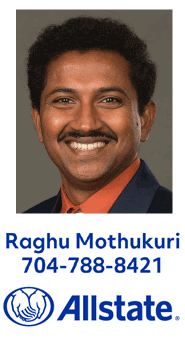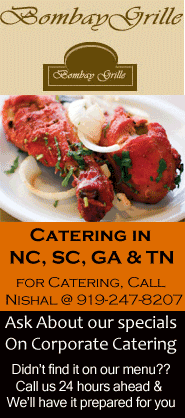|
|
|
|
|
|
Munich is the capital city of Bavaria, Germany. Munich is located on the River Isar north of the Bavarian Alps. Munich is the third largest city in Germany. Ahead of it are Berlin and Hamburg. There are approximately 1.35 million inhabitants within Munich.
The city's motto is "München Mag Dich" ("Munich Likes You"), before 2006 it was "Weltstadt mit Herz". Its native name, München, is derived from the Old German word for Mönche, which means "Monks" in English. This is the reason for the monk on the city's coat of arms. Black and gold - the colours of the Holy Roman Empire - have been the city's official colours since the time of Ludwig the Bavarian.
Munich is not the only location within Bavaria known as "München", three locations exist. The one which is known as "Munich", another which is northeast of the city of Nuremberg, and also a town north of the city of Passau.
Munich lies on the elevated plains of Upper Bavaria, about 50 km north of the northern edge of the Alps, at an altitude of about 520 m. The local rivers are the Isar and the Würm. Munich is situated in the Northern Alpine Foreland. The northern part of this sandy plateau includes a highly fertile flint area which is no longer affected by the folding processes found in the Alps, while the southern part is covered by morainic hills. In between there are fields of fluvio-glacial out-wash, like around Munich. Wherever these deposits get thinner, the ground water can permeate the gravel surface and flood the area, leading to marshes as in the north of Munich.
At the centre of the city is the Marienplatz - a large open square named after the Mariensäule, a Marian column in its centre - with the Old and the New Town Hall. Its tower contains the Rathaus-Glockenspiel. Three gates of the demolished medieval fortification have survived to this day - the Isartor in the east, the Sendlinger Tor in the south and the Karlstor in the west of the inner city. The Karlstor (destroyed during the Second World War and rebuilt afterwards) leads up to the Stachus, a grand square dominated by the Justizpalast (Palace of Justice) and a fountain.
The Peterskirche close to Marienplatz is the oldest church of the inner city. It was first built during the Romanesque period, and was the focus of the early monastic settlement in Munich before the city's official foundation in 1158. Nearby St. Peter the Gothic hall-church Heiliggeistkirche (The Church of the Holy Spirit) was converted to baroque style from 1724 onwards and looks down upon the Viktualienmarkt, the most popular market of Munich.
The Frauenkirche is the most famous building in the city centre and serves as cathedral for the Archdiocese of Munich and Freising. The nearby Michaelskirche is the largest renaissance church north of the Alps, while the Theatinerkirche is a basilica in Italianate high baroque which had a major influence on Southern German baroque architecture. Its dome dominates the Odeonsplatz. Other baroque churches in the inner city which are worth a detour are the Bürgersaalkirche, the Dreifaltigkeitskirche, the St. Anna Damenstiftskirche and St. Anna im Lehel, the first rococo church in Bavaria. The Asamkirche was endowed and built by the Brothers Asam, pioneering artists of the rococo period.
Munich is a green city with numerous parks. The Englischer Garten, close to the city centre and covering an area of 3.7 km² (larger than Central Park in New York), is one of the world's largest urban public parks, and contains a nudist area, jogging tracks and bridle-paths. It was devised and laid out by Benjamin Thompson, Count of Rumford, an American, for both pleasure and as work area for the city's vagrants and homeless. Nowadays it is entirely a park with a Biergarten at the Chinese Pagoda.
Other large green spaces are the modern Olympiapark and Westpark as well as the parks of Nymphenburg Palace (with the Botanical Garden to the north), and Schleissheim Palace. The city's oldest park is the Hofgarten, near the Residenz, and dating back to the 16th century. Most known for the largest beergarden in the town is the former royal Hirschgarten, founded in 1780 for deer which still live there.
The city's zoo is the Tierpark Hellabrunn near the Flaucher Island in the Isar in the south of the city. Another notable park is Ostpark, located in Perlach-Ramersdorf area which houses the swimming area, Michaelibad, one of the largest in Munich.
Nightlife in Munich is thriving with over 6,000 licensed establishments in the city, especially in Schwabing, which is still the main quarter for students and artists. Some notable establishments are: the touristy Hofbräuhaus, one of the oldest breweries in Munich, located in the city centre near Tal; Kultfabrik and Optimolwerke, former industrial areas converted to host many different discos and pubs; Munich's gay quarter is in Isarvorstadt, surrounding the Staatstheater am Gärtnerplatz, also known as the Glockenbachviertel.
Franz Josef Strauss International Airport (IATA: MUC, ICAO: EDDM) is Germany's second largest airport, after Frankfurt, with about 34 million passengers a year, and lies some 30 km (19 mi) north east of the city centre. The airport can be reached by suburban train lines S8 from the east and S1 from the west part of the city. From the Hauptbahnhof (main railway station), the journey takes 40–45 minutes. A magnetic levitation train (called Transrapid) which was to have run at speeds of up to 400 km/h (249 mph) from the central station to the airport in a travel time of 10 minutes had been approved, but was cancelled in March 2008 because of cost escalation. Supporters of the transrapid project founded the organization Bayern pro Rapid in 2007.
The airport began operations in 1992, replacing the former main airport, the Munich-Riem airport (active 1939–1992).
The Bavarian state government has announced plans to expand the Oberpfaffenhofen Air Station, located west of Munich, for commercial use. These plans are opposed by many residents in the Oberpfaffenhofen area.
For its urban population of 2.6 million people, Munich and its closest suburbs have one of the most comprehensive systems in the world, incorporating the Munich U-Bahn (underground railway), the Munich S-Bahn (suburban trains), trams and buses. The system is supervised by the Munich Transport and Tariff Association (Münchner Verkehrs- und Tarifverbund GmbH).
The main railway station is Munich Hauptbahnhof, in the city centre, and there are two smaller main line stations at Pasing, in the west of the city, and Munich Ostbahnhof in the east. All three are connected to the public transport system and serve as transportation hubs.
ICE highspeed trains stop at Munich-Pasing and Munich-Hauptbahnhof only. InterCity and EuroCity trains with destinations East of Munich also stop at Munich East. Since 28 May 2006 Munich is connected to Nuremberg via Ingolstadt by a 300 km/h (186 mph) ICE high speed railway line.
|
|
|




|
|
|
|
|